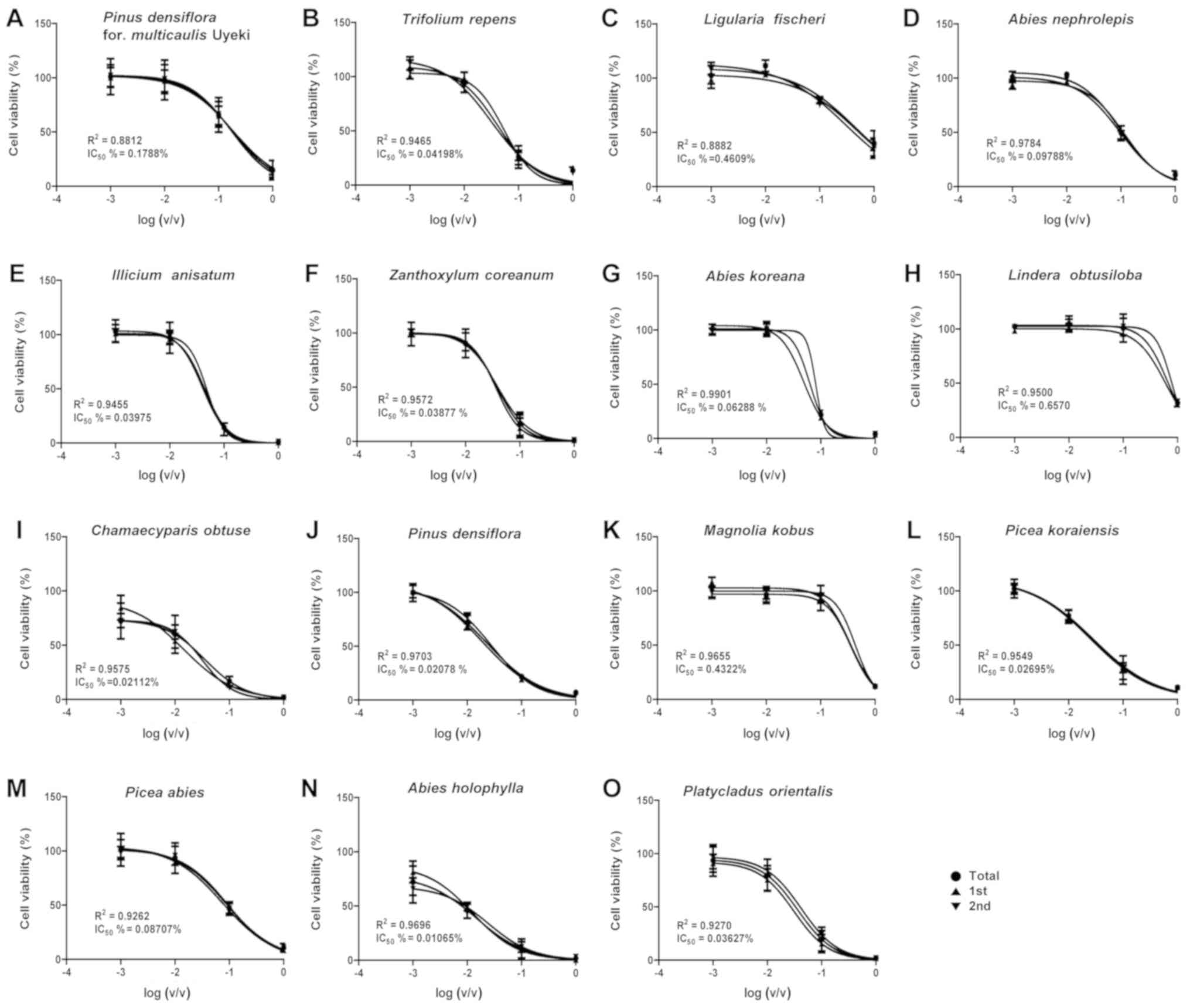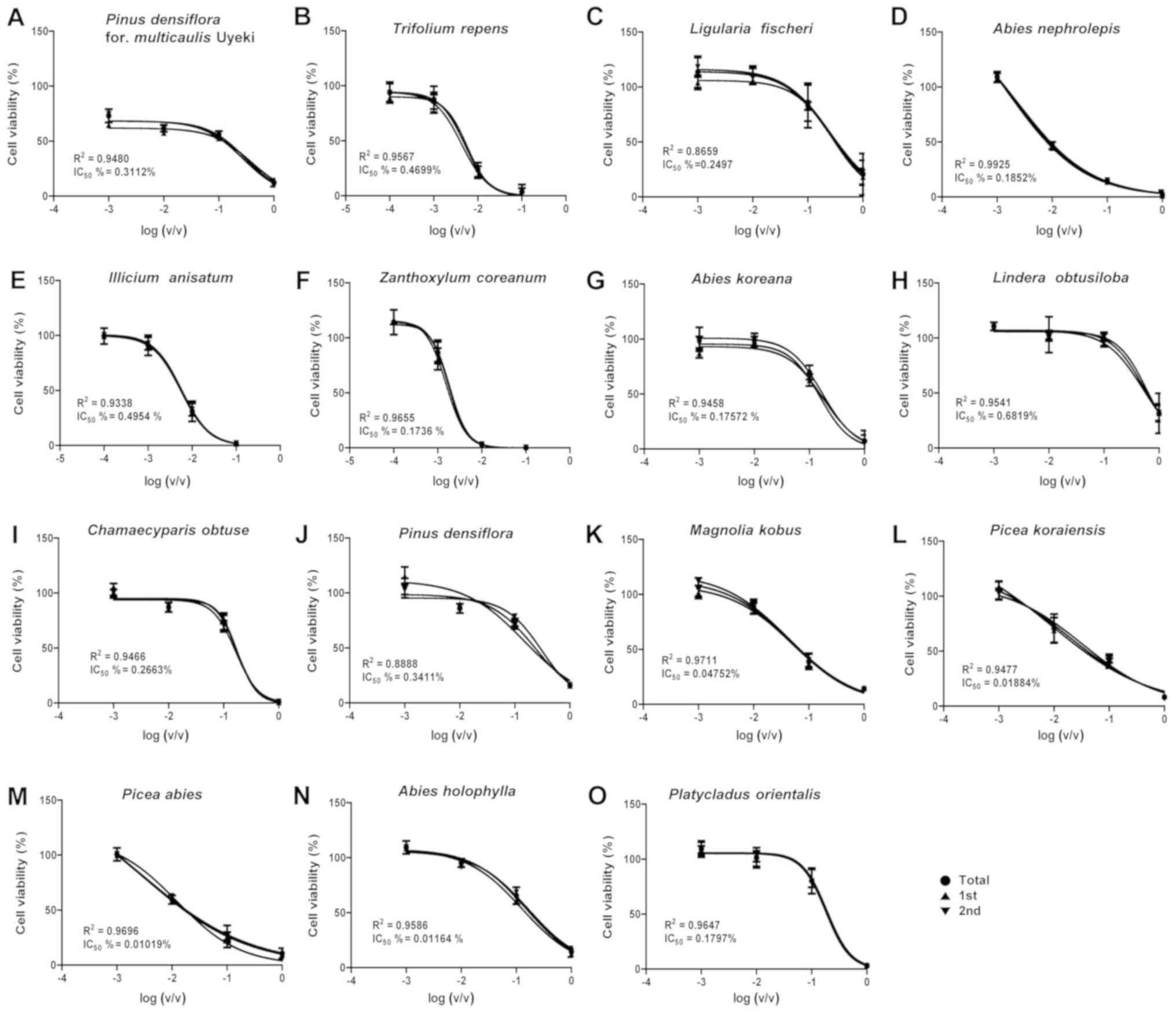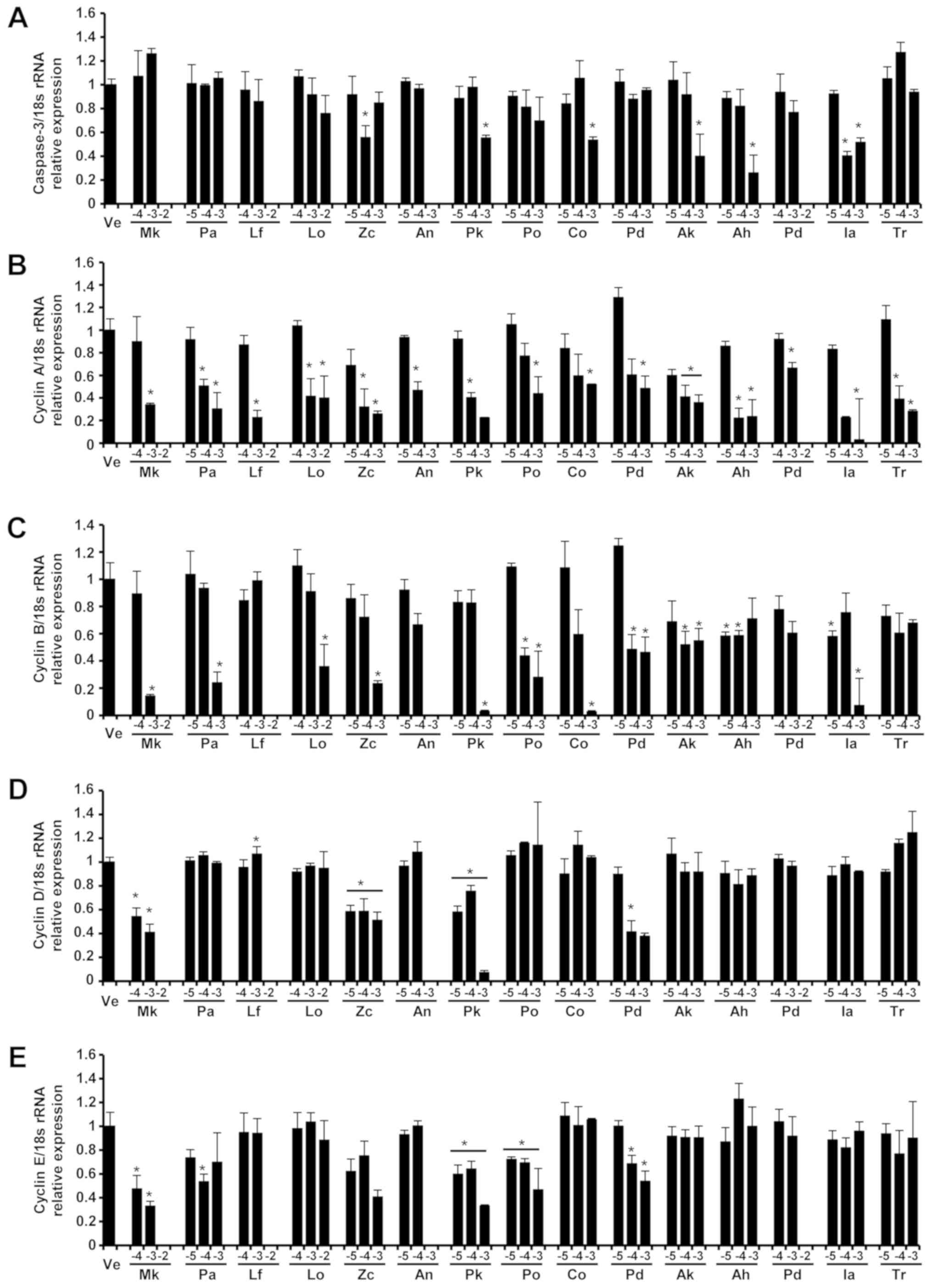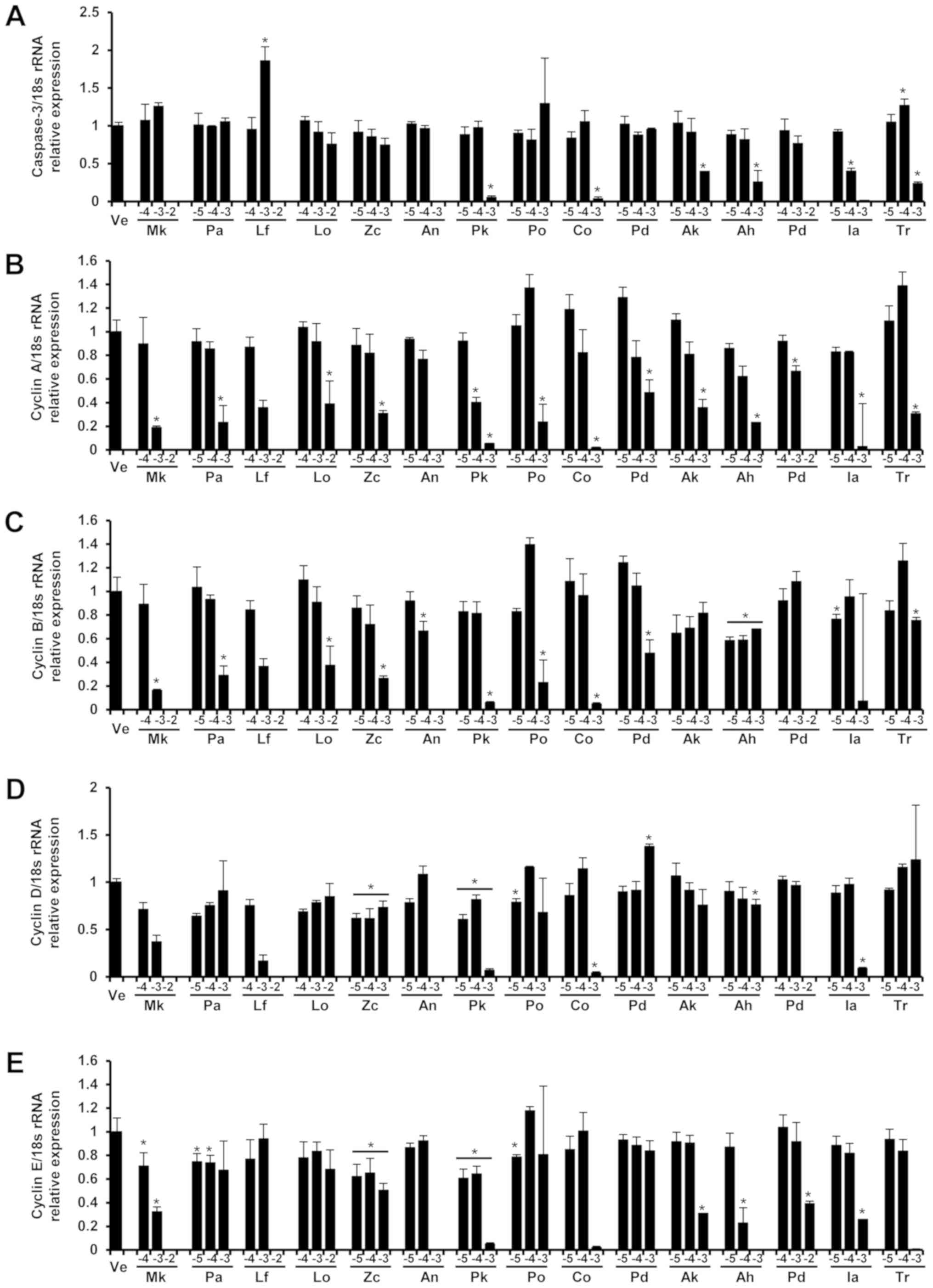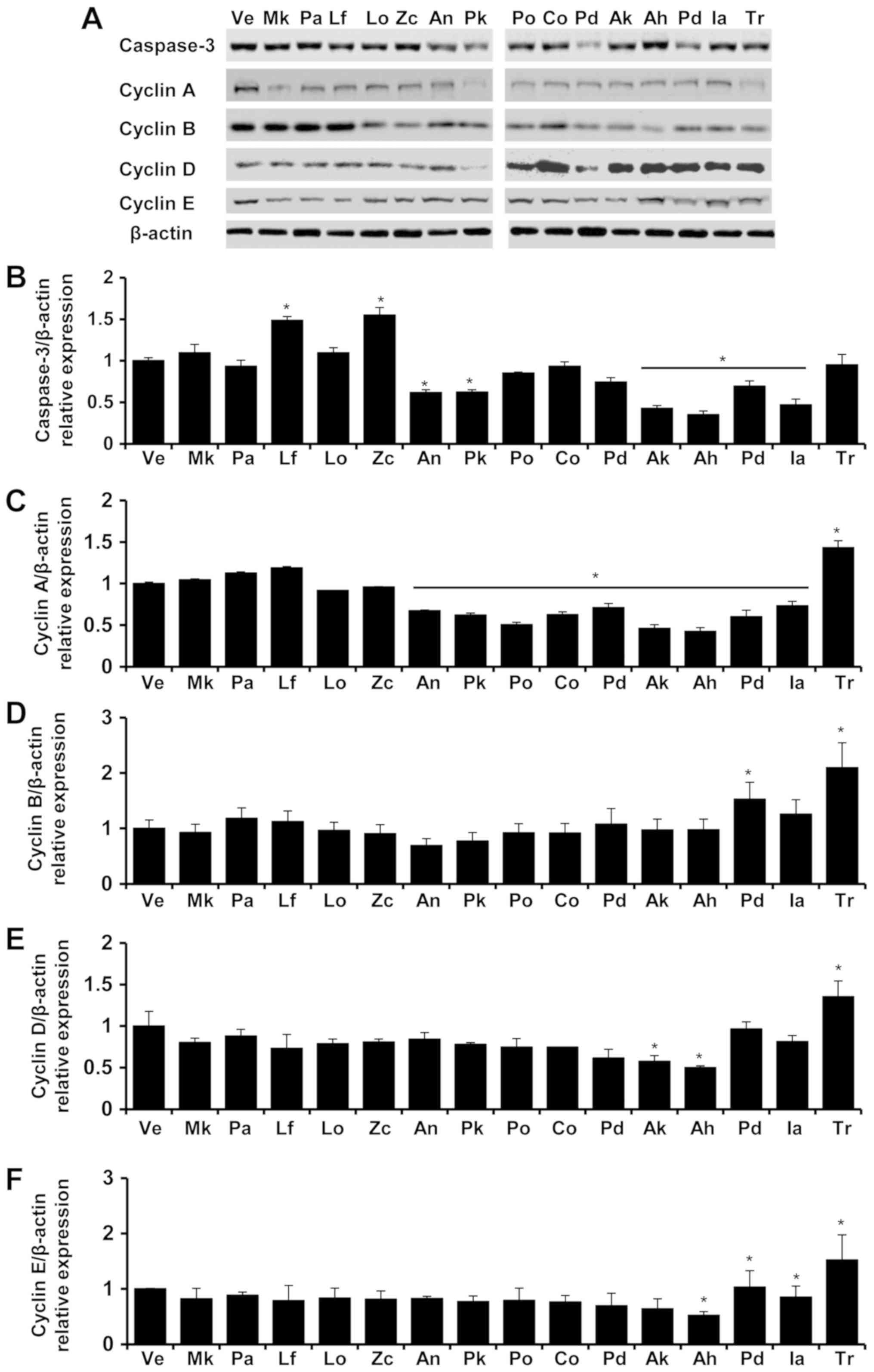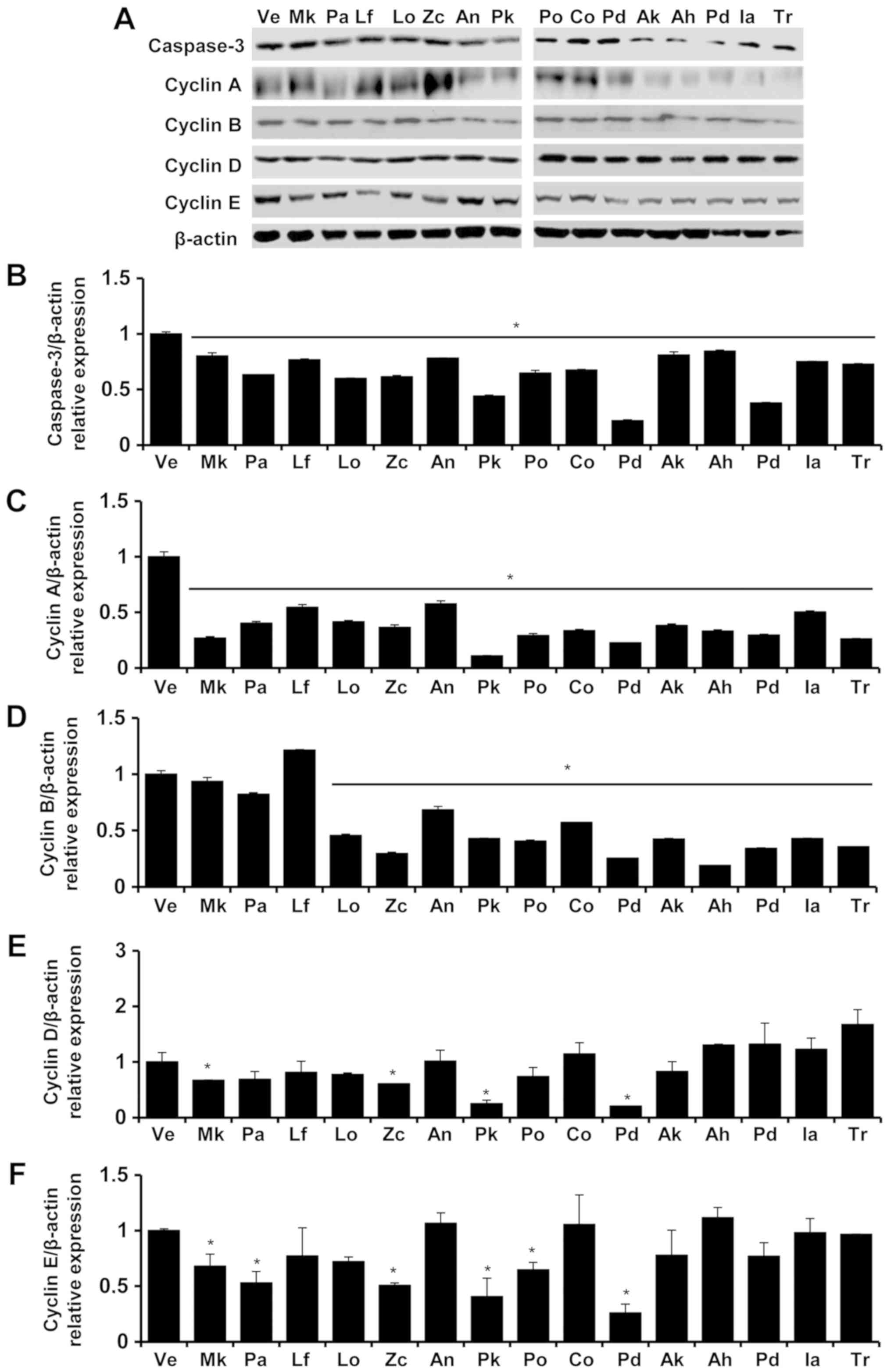|
1
|
Kumar Y, Prakash O, Tripathi H, Tandon S,
Gupta MM, Rahman LU, Lal RK, Semwal M, Darokar MP and Khan F:
AromaDb: A database of medicinal and aromatic Plant's aroma
molecules with phytochemistry and therapeutic potentials. Front
Plant Sci. 9:10812018. View Article : Google Scholar : PubMed/NCBI
|
|
2
|
Diaz-Maroto MC, Diaz-Maroto Hidalgo IJ,
Sanchez-Palomo E and Pérez-Coello MS: Volatile components and key
odorants of fennel (Foeniculum vulgare Mill.) and thyme (Thymus
vulgaris L.) oil extracts obtained by simultaneous
distillation-extraction and supercritical fluid extraction. J Agric
Food Chem. 53:5385–5389. 2005. View Article : Google Scholar : PubMed/NCBI
|
|
3
|
Huie CW: A review of modern
sample-preparation techniques for the extraction and analysis of
medicinal plants. Anal Bioanal Chem. 373:23–30. 2002. View Article : Google Scholar : PubMed/NCBI
|
|
4
|
Russo R, Corasaniti MT, Bagetta G and
Morrone LA: Exploitation of cytotoxicity of some essential oils for
translation in cancer therapy. Evid Based Complement Alternat Med.
2015:3978212015. View Article : Google Scholar : PubMed/NCBI
|
|
5
|
Manion CR and Widder RM: Essentials of
essential oils. Am J Health Syst Pharm. 74:e153–e162. 2017.
View Article : Google Scholar : PubMed/NCBI
|
|
6
|
Cavanagh HM and Wilkinson JM: Biological
activities of lavender essential oil. Phytother Res. 16:301–308.
2002. View Article : Google Scholar : PubMed/NCBI
|
|
7
|
Bakkali F, Averbeck S, Averbeck D and
Idaomar M: Biological effects of essential oils-a review. Food Chem
Toxicol. 46:446–475. 2008. View Article : Google Scholar : PubMed/NCBI
|
|
8
|
Israels ED and Israels LG: The cell cycle.
Stem Cells. 19:88–91. 2001. View Article : Google Scholar : PubMed/NCBI
|
|
9
|
Wang XW, Zhan Q, Coursen JD, Khan MA,
Kontny HU, Yu L, Hollander MC, O'Connor PM, Fornace AJ Jr and
Harris CC: GADD45 induction of a G2/M cell cycle checkpoint. Proc
Natl Acad Sci USA. 96:3706–3711. 1999. View Article : Google Scholar : PubMed/NCBI
|
|
10
|
Bertoli C, Skotheim JM and de Bruin RA:
Control of cell cycle transcription during G1 and S phases. Nat Rev
Mol Cell Biol. 14:518–528. 2013. View Article : Google Scholar : PubMed/NCBI
|
|
11
|
Vermeulen K, Van Bockstaele DR and
Berneman ZN: The cell cycle: A review of regulation, deregulation
and therapeutic targets in cancer. Cell Prolif. 36:131–149. 2003.
View Article : Google Scholar : PubMed/NCBI
|
|
12
|
Donjerkovic D and Scott DW: Regulation of
the G1 phase of the mammalian cell cycle. Cell Res. 10:1–16. 2000.
View Article : Google Scholar : PubMed/NCBI
|
|
13
|
Kramer A, Mailand N, Lukas C, Syljuåsen
RG, Wilkinson CJ, Nigg EA, Bartek J and Lukas J:
Centrosome-associated Chk1 prevents premature activation of
cyclin-B-Cdk1 kinase. Nat Cell Biol. 6:884–891. 2004. View Article : Google Scholar : PubMed/NCBI
|
|
14
|
Jänicke RU, Sprengart ML, Wati MR and
Porter AG: Caspase-3 is required for DNA fragmentation and
morphological changes associated with apoptosis. J Biol Chem.
273:9357–9360. 1998. View Article : Google Scholar : PubMed/NCBI
|
|
15
|
Li P, Nijhawan D and Wang X: Mitochondrial
activation of apoptosis. Cell. 116 (2 Suppl):S57–S59. 2004.
View Article : Google Scholar : PubMed/NCBI
|
|
16
|
Luo X, Budihardjo I, Zou H, Slaughter C
and Wang X: Bid, a Bcl2 interacting protein, mediates cytochrome c
release from mitochondria in response to activation of cell surface
death receptors. Cell. 94:481–490. 1998. View Article : Google Scholar : PubMed/NCBI
|
|
17
|
Yang J, Liu X, Bhalla K, Kim CN, Ibrado
AM, Cai J, Peng TI, Jones DP and Wang X: Prevention of apoptosis by
Bcl-2: Release of cytochrome c from mitochondria blocked. Science.
275:1129–1132. 1997. View Article : Google Scholar : PubMed/NCBI
|
|
18
|
Porter AG and Jänicke RU: Emerging roles
of caspase-3 in apoptosis. Cell Death Differ. 6:99–104. 1999.
View Article : Google Scholar : PubMed/NCBI
|
|
19
|
Gurib-Fakim A: Medicinal plants:
Traditions of yesterday and drugs of tomorrow. Mol Aspects Med.
27:1–93. 2006. View Article : Google Scholar : PubMed/NCBI
|
|
20
|
El-Aouar Filho RA, Nicolas A, De Paula
Castro TL, Deplanche M, De Carvalho Azevedo VA, Goossens PL, Taieb
F, Lina G, Le Loir Y and Berkova N: Heterogeneous family of
cyclomodulins: Smart weapons that allow bacteria to hijack the
eukaryotic cell cycle and promote infections. Front Cell Infect
Microbiol. 7:2082017. View Article : Google Scholar : PubMed/NCBI
|
|
21
|
Barile FA and Cardona M: Acute
cytotoxicity testing with cultured human lung and dermal cells. In
Vitro Cell Dev Biol Anim. 34:631–635. 1998. View Article : Google Scholar : PubMed/NCBI
|
|
22
|
Edris AE: Pharmaceutical and therapeutic
potentials of essential oils and their individual volatile
constituents: A review. Phytother Res. 21:308–323. 2007. View Article : Google Scholar : PubMed/NCBI
|
|
23
|
Kim JY, Kim SS, Oh TH, Baik JS, Song G,
Lee NH and Hyun CG: Chemical composition, antioxidant,
anti-elastase, and anti-inflammatory activities of Illicium
anisatum essential oil. Acta Pharm. 59:289–300. 2009.
View Article : Google Scholar : PubMed/NCBI
|
|
24
|
Posadzki P, Alotaibi A and Ernst E:
Adverse effects of aromatherapy: A systematic review of case
reports and case series. Int J Risk Saf Med. 24:147–161. 2012.
View Article : Google Scholar : PubMed/NCBI
|















